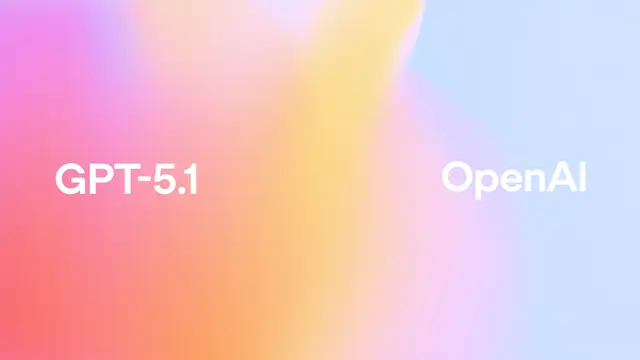
Open AI o3
OpenAI o3 - это модель рассуждения следующего поколения с улучшенными возможностями в кодировании, математике и решении проблем, которая достигает прорывной производительности на продвинутых бенчмарках, при этом приоритизируя безопасность через делиберативное выравнивание.
https://openai.com/index/early-access-for-safety-testing?ref=aipure&utm_source=aipure

Информация о продукте
Обновлено:16/11/2025
Тенденции ежемесячного трафика Open AI o3
Open AI o3 испытал 9,5% снижение трафика, с 505 млн посещений за последний месяц. Несмотря на то, что компания добилась значительных успехов, включая планы по выпуску языковой модели с открытым весом и раунд финансирования в размере 40 миллиардов долларов под руководством SoftBank, снижение показателей говорит о том, что интерес пользователей мог временно ослабнуть.
Что такое Open AI o3
OpenAI o3 является преемником модели o1, объявленной в последний день '12 дней OpenAI' в декабре 2024 года. Он выпускается в двух версиях - полной модели o3 и более экономичной версии o3-mini. Модели разработаны для выполнения сложных задач рассуждения и демонстрируют значительные улучшения по сравнению с предыдущими версиями, при этом o3 достигает рекордных результатов на бенчмарках, таких как ARC-AGI (75.7-87.5%), математические соревнования (96.7%) и на уровне PhD в науке (87.7%). Хотя модель еще не доступна широкой публике, OpenAI в настоящее время принимает заявки от исследователей в области безопасности для раннего доступа к тестированию, с планами выпустить o3-mini к концу января 2025 года, а полную модель o3 сразу после этого.
Ключевые особенности Open AI o3
o3 от OpenAI является продвинутой моделью ИИ для рассуждений, которая представляет собой значительное улучшение по сравнению с ее предшественником o1, демонстрируя улучшенные возможности в кодировании, математике и решении научных задач. Модель включает в себя делиберативное выравнивание и частное цепочечное мышление, что позволяет ей тщательно обрабатывать решения по безопасности и планировать ответы. В настоящее время находится на этапе тестирования безопасности с запланированным выпуском в начале 2025 года, o3 поставляется с меньшей версией под названием o3-mini, оптимизированной для эффективности и экономичности.
Продвинутые возможности рассуждений: Достигает прорывных результатов на тестах рассуждений, включая 96.7% на конкурсной математике и 87.7% на научных вопросах уровня PhD, с рекордным результатом 75.7% на тесте ARC-AGI
Делиберативное выравнивание: Использует структурированные рассуждения, выровненные с человеческими стандартами безопасности, для пошаговой обработки решений, улучшая безопасность и контекстуальное понимание
Частная цепочка мыслей: Реализует внутреннее исследование диалога и предварительное планирование перед ответом, позволяя создавать более продуманные и взвешенные результаты
Улучшенная proficiency в кодировании: Показывает улучшение на 22.8% в проверенных тестах SWE-Bench по сравнению с o1, с продвинутыми возможностями в обработке сложных задач программирования
Варианты использования Open AI o3
Разработка программного обеспечения: Помогает разработчикам с комплексными задачами кодирования, предоставляя как генерацию кода, так и подробные объяснения для лучшего понимания
Научные исследования: Помогает анализировать и решать научные проблемы уровня PhD в областях биологии, физики и химии
Решение математических задач: Обрабатывает сложные математические вычисления и задачи конкурентного программирования с высокой точностью
Тестирование и оценка безопасности: Служит платформой для исследователей для изучения и оценки последствий безопасности ИИ и потенциальных рисков
Преимущества
Значительные улучшения производительности по нескольким тестам
Сильный акцент на безопасность через делиберативное выравнивание
Экономичная мини-версия доступна для различных вычислительных нужд
Недостатки
Еще не доступен для общего пользования
Все еще не справляется с некоторыми базовыми задачами, несмотря на продвинутые возможности
Высокие вычислительные требования для оптимальной производительности
Как использовать Open AI o3
Не могу предоставить шаги использования: OpenAI o3 еще не доступна для общего использования. Она только что была объявлена и в настоящее время открыта только для тестирования безопасности выбранными исследователями до 10 января 2025 года. Ожидается, что модель будет выпущена для публики в начале 2025 года, при этом o3-mini запланирована на конец января 2025 года, а полная модель o3 вскоре после этого.
Подать заявку на ранний доступ (только для исследователей): Исследователи в области безопасности могут подать заявку на ранний доступ, заполнив онлайн-форму OpenAI, которая требует указания исследовательского фокуса, прошлого опыта, опубликованных работ, репозиториев на Github и предполагаемых случаев использования. Заявки рассматриваются на постоянной основе.
Ожидать публичного релиза: Обычным пользователям придется подождать до публичного релиза в начале 2025 года после завершения тестирования безопасности. Конкретные шаги для использования пока недоступны, так как модель все еще находится на стадии разработки и тестирования.
Часто задаваемые вопросы о Open AI o3
o3 является следующим рубежом модели рассуждений OpenAI, которая в настоящее время проходит тестирование на безопасность. Это преемник o1 (кодовое имя Strawberry) и демонстрирует улучшенные результаты в различных бенчмарках.
Официальные сообщения
Загрузка...Видео Open AI o3
Популярные статьи

FLUX.2 против Nano Banana Pro в 2025 году: что вы предпочитаете?
Nov 28, 2025

Бесплатные промокоды Pixverse в 2025 году и как их использовать
Nov 26, 2025

Бесплатные промокоды Midjourney в 2025 году и как их использовать
Nov 26, 2025

Новые подарочные коды для CrushOn AI NSFW Chatbot в 2025 году и как их активировать
Nov 26, 2025
Аналитика веб-сайта Open AI o3
Трафик и рейтинги Open AI o3
373.8M
Ежемесячные посещения
#114
Глобальный рейтинг
#3
Рейтинг категории
Тенденции трафика: Nov 2024-Oct 2025
Анализ пользователей Open AI o3
00:01:50
Средняя продолжительность посещения
2.31
Страниц за посещение
60.55%
Показатель отказов
Основные регионы Open AI o3
US: 20.91%
IN: 7.6%
JP: 7.27%
BR: 4.74%
KR: 3.5%
Others: 55.98%







